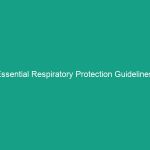Introduction
In the construction industry, the Safety of workers is paramount. Health, Safety, and Environment (HSE) regulations aim to protect individuals from workplace Hazards, ensuring a safe working environment. Among the many processes utilized in construction, brazing is a critical technique that requires specific Safety Measures to prevent accidents and health issues. Understanding brazing Safety in construction is essential for employers and employees alike, as it not only protects individuals but also enhances project efficiency and quality.
Brazing involves joining two metals together using a filler metal, which is melted above 450°C but below the melting point of the base materials. This process can pose several risks, including exposure to harmful fumes, burns, and fire Hazards. Therefore, it is crucial to establish robust safety protocols to mitigate these risks and promote a safe working environment. In this article, we will delve into the key aspects of brazing safety in construction, highlighting regulatory frameworks, best practices, case studies, challenges, and future trends.
Regulatory Frameworks for Brazing Safety
Understanding HSE Regulations
Health, Safety, and Environment regulations provide a framework for ensuring worker safety in various industries, including construction. Organizations such as the Occupational Safety and Health Administration (OSHA) in the United States and the Health and Safety Executive (HSE) in the UK establish guidelines that employers must follow to protect their workers. These regulations encompass various aspects of Workplace Safety, including the handling of hazardous materials, equipment safety, and Training requirements.
For brazing operations, specific regulations address brazing safety in construction, emphasizing the need for Personal Protective Equipment (PPE), ventilation, and training. Employers are required to conduct risk assessments to identify potential hazards associated with brazing processes and implement Control Measures to mitigate these risks. Failure to comply with these regulations can result in significant penalties and increased liability for employers.
Key Regulations Affecting Brazing Operations
- osha Standard 29 CFR 1910.252: This standard outlines the Safety Measures for welding, cutting, and brazing operations, including the proper use of PPE and fire protection measures.
- ANSI Z49.1: The American National Standards Institute provides guidelines for safety in welding and allied processes, including brazing.
- Environmental Protection Agency (EPA) Regulations: The EPA regulates hazardous air pollutants that may be emitted during brazing operations, requiring employers to implement proper ventilation systems.
Best Practices for Brazing Safety
Personal Protective Equipment (PPE)
Utilizing appropriate PPE is one of the most effective ways to enhance brazing safety in construction. Workers should wear protective gear that includes:
- Flame-resistant clothing: This type of clothing helps to protect against Burns from sparks and molten metal.
- Safety Goggles or face shields: These protect the eyes from harmful UV rays and flying particles.
- Gloves: Heat-resistant gloves should be worn to prevent burns during the brazing process.
- Respirators: In environments with inadequate ventilation, workers should use respirators to protect against harmful fumes.
Workplace Ventilation
Ensuring proper ventilation is essential to minimize exposure to harmful fumes generated during brazing. Employers must provide adequate exhaust systems that effectively remove these fumes from the work area. Regular Maintenance of ventilation systems is critical to ensure they operate efficiently. Additionally, workers should be trained on the importance of ventilation and how to recognize signs of inadequate air quality.
Training and Education
Comprehensive training programs for workers involved in brazing operations are vital for promoting safety. These programs should include:
- Understanding the brazing process and associated risks.
- Safe handling and storage of materials.
- Proper use of PPE and emergency Procedures.
- Recognizing hazardous situations and reporting them promptly.
Regular refresher courses can help maintain safety awareness and keep workers informed about any changes in safety regulations or procedures.
Fire Safety Protocols
Fire hazards are a significant concern during brazing operations. Employers must implement stringent fire safety protocols, including:
- Establishing a fire watch during brazing operations to monitor for potential Fires.
- Keeping flammable materials away from the brazing area.
- Providing fire extinguishers and ensuring workers are trained in their use.
- Developing an emergency response plan in case of a fire.
Conducting regular fire drills can also help prepare workers to respond effectively in case of an emergency.
Case Studies: Lessons Learned from Brazing Incidents
Case Study 1: The Importance of PPE
In a recent incident at a construction site, a worker suffered severe burns while performing brazing operations. The investigation revealed that the worker was not wearing appropriate flame-resistant clothing. This incident highlights the critical importance of enforcing PPE protocols. Employers must ensure that all workers are equipped with the necessary protective gear before commencing any brazing work.
Case Study 2: Ventilation Failures
Another incident involved a worker who experienced respiratory issues due to inadequate ventilation during brazing operations. The company did not maintain its ventilation system, leading to the accumulation of harmful fumes. This case underscores the necessity for regular maintenance checks of ventilation systems and the importance of training workers to recognize when air quality is compromised.
Case Study 3: Fire Hazard Awareness
A construction site faced a significant fire hazard when flammable materials were stored improperly near a brazing Operation. Fortunately, a worker alerted the supervisor before an incident occurred, demonstrating the importance of fostering a safety culture where employees feel empowered to report hazards. This incident led the company to implement stricter storage protocols and enhance fire safety training for all employees.
Challenges in Implementing Brazing Safety
Compliance with Regulations
One of the primary challenges in ensuring brazing safety in construction is maintaining compliance with various regulations. Many construction companies operate across multiple jurisdictions, each with its own set of regulations. Keeping track of these requirements can be overwhelming, particularly for smaller companies with limited resources. To overcome this challenge, organizations should designate a safety officer responsible for ensuring compliance and staying updated on regulatory changes.
Cultural Resistance to Safety Practices
Another challenge is the cultural resistance to safety practices among some workers. In some cases, employees may perceive safety protocols as cumbersome or unnecessary, leading to non-compliance. To address this issue, employers can foster a culture of safety by involving employees in safety discussions and encouraging their input on safety practices. Recognition programs can also motivate workers to prioritize safety.
Budget Constraints
Budget constraints can limit a company’s ability to invest in safety equipment, training, and proper ventilation systems. However, prioritizing safety can lead to long-term cost savings by reducing accidents and associated expenses. Companies can consider seeking external funding or grants aimed at improving Workplace Safety to address these challenges.
Future Trends in Brazing Safety
Technological Advancements
The future of brazing safety in construction is likely to be shaped by technological advancements. Innovations such as automated brazing systems and improved ventilation technologies can enhance safety and efficiency. For example, automated systems can reduce the need for workers to be in proximity to hazardous conditions, while advanced ventilation systems can better filter harmful fumes.
Increased Focus on Mental Health
As awareness of mental health issues in the workplace grows, the construction industry is beginning to recognize the importance of mental well-being in relation to safety. Stress and fatigue can impair judgment and increase the likelihood of accidents. Future safety programs may incorporate mental health resources and training to create a more holistic approach to Workplace Safety.
Integration of Safety into Project Planning
As the construction industry evolves, there is a growing emphasis on integrating safety considerations into project planning from the outset. This proactive approach can help identify potential hazards related to brazing operations early in the project lifecycle, allowing for the implementation of effective safety measures before work begins.
Conclusion
Safety in brazing operations is a critical aspect of construction that cannot be overlooked. By adhering to regulatory frameworks, implementing Best Practices, and learning from past incidents, employers can create a safer working environment for their employees. It is essential to prioritize brazing safety in construction by investing in proper training, PPE, and ventilation systems, as well as fostering a culture of safety among workers.
As we look toward the future, embracing technological advancements and addressing mental health concerns will further enhance Workplace Safety. Together, we can work towards reducing risks associated with brazing and ensuring that every worker returns home safely at the end of the day. For construction companies, the time to act is now—implement these safety measures and commit to a culture of safety today.


